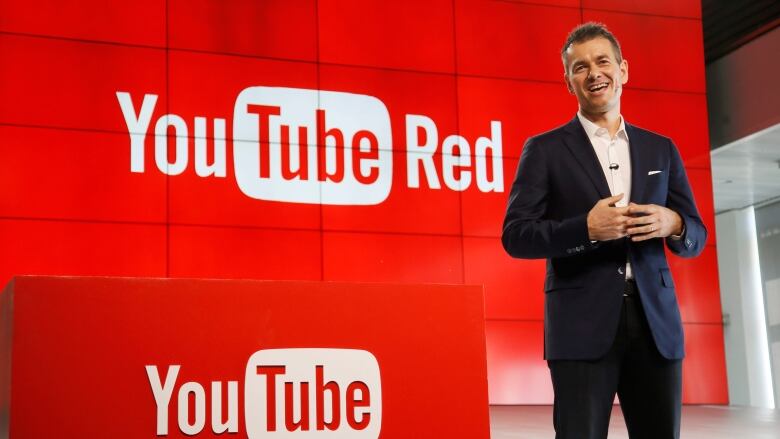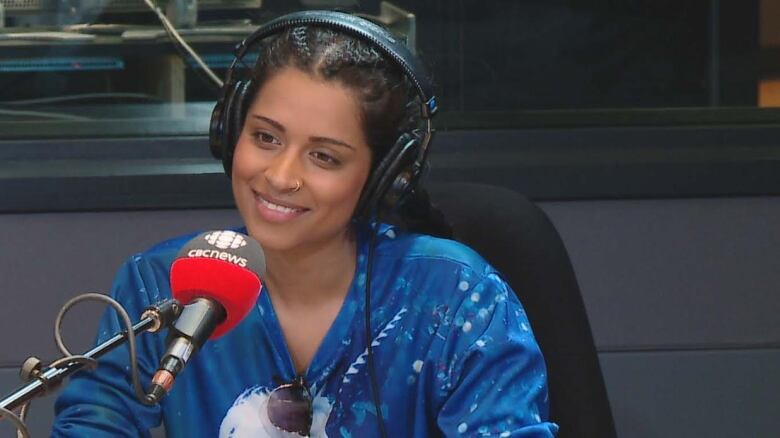YouTube Red subscription service could change the future of YouTube stardom
Superstars with millions of followers could boost early subscriptions with promise of original content

YouTube is set to evolve today with the launch in the U.S.of YouTube Red, an ad-free subscription service,possibly positioning itself to compete with other services like Netflix and Hulu.
But the content creators who built YouTube into one of the best-known placesto see a new crop of performers and personalities know very little about how Redmight change the way they make a living on the internet.
Red, which was announced last week,combines ad-free videos, new original series and movies from top YouTubers, and on-demand unlimited streaming music.
- YouTube Red will be an ad-free subscription service for videos and music
- PewDiePie tops Forbes list of YouTube millionaires
- Lilly Singh, Toronto's Superwoman, heads out on the road
The original programming, calledYouTubeOriginals, willstarsome of their most popular personalities, such as Felix "PewDiePie"Kjellbergand Toronto-born Lilly "Superwoman" Singh.
Red will cost $10 USa month when it launches first in the United States.Googlehassaid it willintroduceRed to Canada and elsewhere around the world throughout 2016.
Creators in the dark about revenue share
CBC News spoke to several YouTubers featured at the Buffer Festival in Toronto, days after Red was announced. None of them had heard about it before the announcement, and they're fuzzy on what the changes to the platform they appear on will do to their work, or how they get paid.
"The first thing that came to mind was, 'How does this affect ad revenue?'" said MichaelRizzi, 21, aYouTuberfrom Ottawa with over 97,000 subscribers.
"If somebody's paying a flat rate to remove ads, then that person isn't clicking ads on my video. So money goes straight toYouTubebut not to the creator. So I wonder how they're going to balance that."
"In terms of compensation, I don't know how it's going to affect me," said travel blogger Kristen Sarah. "But it won'tchange the way I interact with my audience. I hope."
YouTubepartners currently make 55 per cent of the ad revenue from their videos.YouTubesays "the majority of the [Red subscriber]revenue willgo to creators," but hasn't specified how that revenue will be calculated.
Added to the uncertaintyare reports late Tuesday that creators will not receive compensation for new subscribers who watch ad-free videos during their complimentary free first month.
YouTube has confirmed to us that creators will not receive revenue when a #YouTubeRed user watches your videos during the free trial.
—@FullscreenNetYouTube will not pay out revenue to creators while people are using the #YouTubeRed trial. Any help, @taylorswift13?
—@SnazzyQJoin Redor risk removal
Google earned further ire when Tech Crunch reported that creators who do not agree to be part of Red risk having their content removed entirely in the U.S.
"While close to 99 per centof the content watched on YouTube is covered by our current agreements for YouTube Red, there are some partners who have asked for more time to think about their options," a YouTube spokesperson told CBC News.
"While we work with these partners to update their terms, we unfortunately can't make their claimed videos available in the U.S."
According to Sarah Bolen, a community manager who works on several women's lifestyle channels on YouTube, including The Domestic Geek, the all-or-nothing approach isn't surprising.
"You can't offer a service like YouTube Red, say you're going to pay $10 a month to be able to watch content without advertisements, but guess what, it's actually only half the content. They have to be able to get everything," she says.
That caveat has the most potential for conflict when creators have pre-existing agreements that restrict their content to other subscription-based online video platforms. Late last week, ESPN removed all content from its YouTube channels, citing "rights and legal issues" preventing it from making them available to Red subscribers.
"ESPN is not currently part of the Red service. Content previously available on the free YouTube service will be available across ESPN digital properties," ESPN said in a statement.
Original content the big draw
YouTube'sOriginals will likely be the main reason for people to pay for Red, saysBolen, anchored as they are by the platform's global superstars.
Kjellberg, YouTube's biggest celebrity, has more than 40 million subscribers. Even a percentage of diehard fans who want to see him in his YouTube Original show Scare PewDiePie could result in millions of subscribers.
Teens andmillennials,could feel compelled to subscribeso that they cantalk about the newestPewDiePieseries in much the same way thatHouse of Cardsdid forNetflix.

"I think a lot of people who gotoYouTubedaily to watch regular content are very used to the ad model," she says, "And they don't find it as intrusive as we might have five years ago."
No change for most creators
Despite this uncharted territory,Bolenis cautiously optimistic about Red and the future ofYouTube.
"YouTubeandGooglehave always been extremely up front and fairly equitable with their partners. So I anticipateand hopethat they will remain the same way," she says.
And increasingly, business-savvyYouTubers, who interact with the public and constantly maintain a carefully-crafted public persona, are on other social media platforms as well, includingInstagram, Twitter andSnapchat, to reach the widest audience possible.
Latoya Forever, who stars in a reality-comedy series featuring her friends and family, releases her videos first on a subscribers-only site called Vessel. The episodes are then posted onto YouTube two days later. "I'm on YouTube, Vessel, Instagram and Twitter," she says. "It's always good to make money on all platforms, because you never know what can happen tomorrow."
Sarah aggregates all of her content across multiple channels on her blog, Hopscotch The Globe, to maintain her own personal brand outside of YouTube or any other platform. "I just think it's a good idea to spread yourself everywhere, because you can reach so many more people and get your creativity and your work shown on a larger level," she says.












_(720p).jpg)


 OFFICIAL HD MUSIC VIDEO.jpg)
.jpg)



























































































